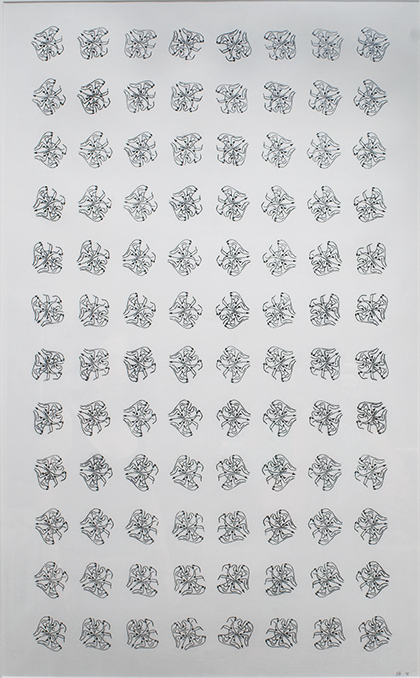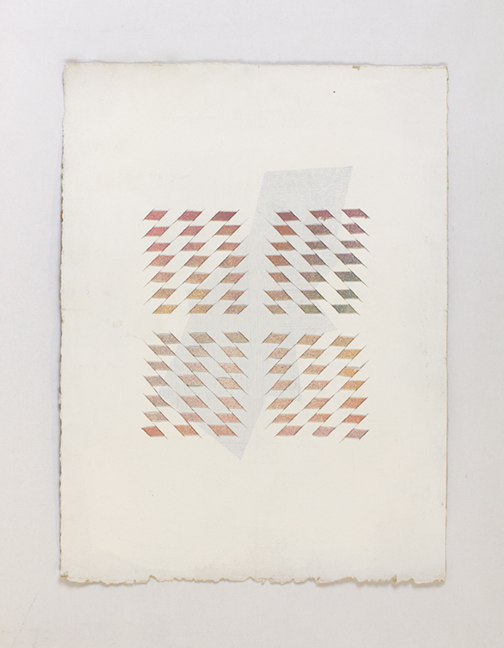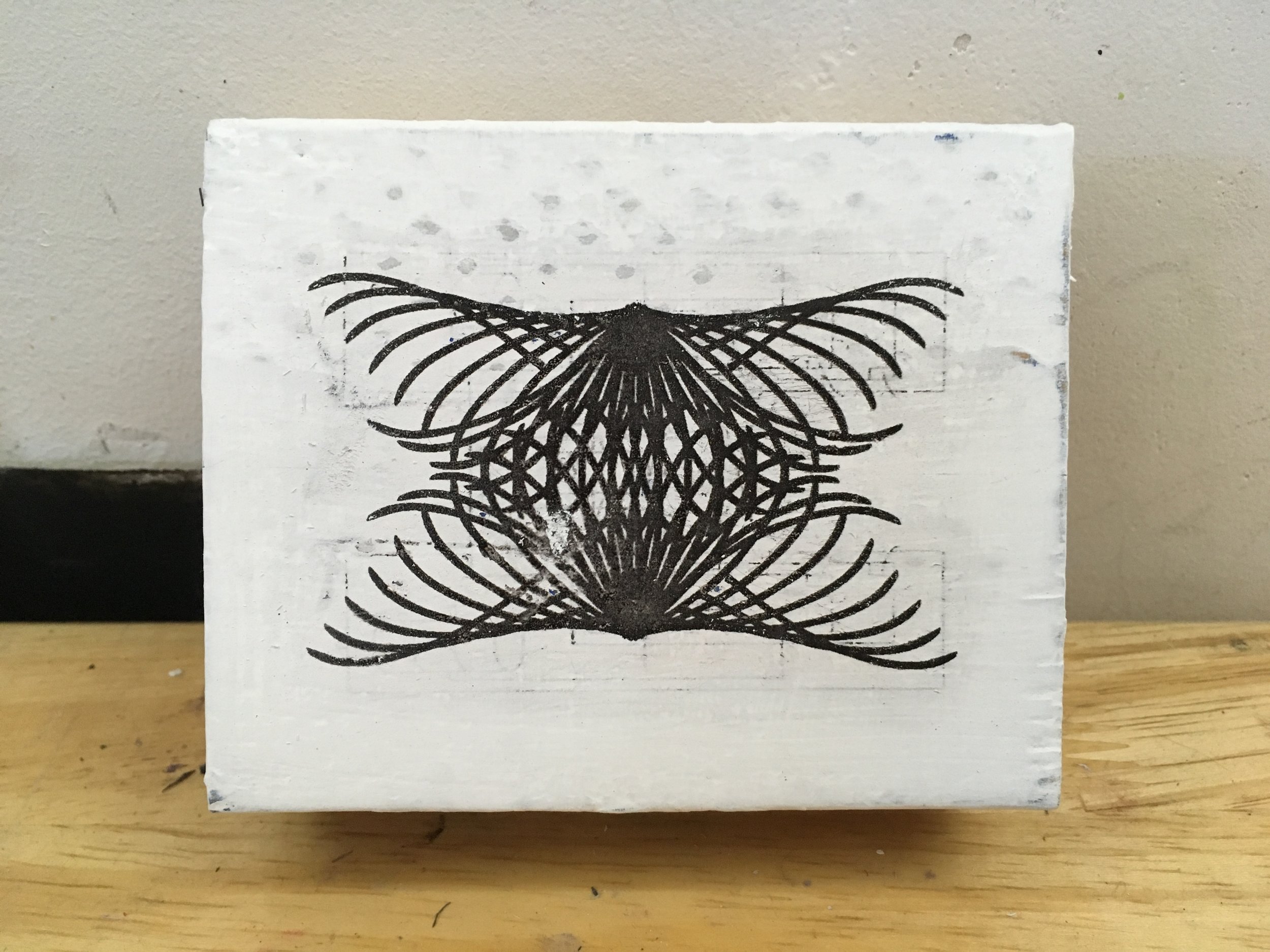System and Process For (2015) is a body of monochromatic, 2D works on paper; inspired by patents for aerial drones.
Hodara transforms the visual language of patent drawings for algorithmic systems into evocative images. These images re-envision the iconography of patents — the infrastructures responsible for codifying the abstract processes of new technologies into legal systems and applications.
The intricate and ornate patterns Hodara creates are from forms found in the patents themselves. On one hand, the intimacy of the final pieces subvert the opaque quality of patent nomenclature and iconography. On the other hand, the tedium of her designs highlight the meticulous and monotonous nature of the very systems which allow this protectable, intellectual property to exist.
The concept for this body of work was born out of conversations with respected colleague Zach Kaiser
Reflection
When I was first exposed to the patents - I was struck by their strangeness. They paired tedious scientific-nomenclature with child-like drawings, complete with misspelled and nonsensical labels. The patents looked nothing like the graceful drawings from 19th century patents (phonographs, telegraphs, etc.) that I was familiar with from high school textbooks. Nor did they look like the seductive, Tufte-inspired data visualizations that we so often see online.
Knowing how important the patent infrastructure is to technological development, I wanted to recreate the patent from my own perspective – as both a user of these enticing yet ethically questionable technologies, and an artist interested in form and beauty. Drone Down is one of my favorite pieces, and also one of the earliest. The imagery is created from iconography from a patent application filed by Amazon in 2014 for an Unmanned Aerial Vehicle Delivery System (patent application number 20150120094).
My dad builds drones from scratch, so I've been around quite a few of these machines. Yet the patent paints a very different picture of the drones I've seen first hand. Instead of my dad’s violent, unwieldy, flying beasts (outfitted with wine corks as landing gear) that routinely crash into the lawn, the patent describes a smart piece of software: something silent, methodical, reliable, and, almost, sensible. Nothing in the patent suggests the adrenaline rush brought on by the sound and gust of wind created by the moving propellers at takeoff. And nothing in the patent describes the revolution that same-day human-less delivery systems will have (and is already having) on consumerism.
The intricate patterns, repurposed from the patent itself, diverge from the excitement of disruptive innovation we see in the 21st century tech world. Instead, the pieces reflect the gravity-defying moment of take off I’ve witnessed in my parents’ backyard, and the ominous nature of hovering at the cusp of a great technological revolution.
Exhibitions
Boston Key Party Drawing Show, Stove Factory Gallery, Charlestown MA, 2019
Alter Ego, Bromfield Gallery, Boston MA, 2016
The System and Process For, Archive Project Space, Philadelphia PA, 2016 [link]
two-person exhibition with Nathan Thomas Wilson
What If?, The Chautauqua National Exhibition, Richmond KY, 2016
30 Below, Kathryn Schultz Gallery, Cambridge MA, 2016 [link]
Juror Mary M. Tinti, Curator at the Fitchburg Art Museum
Printwork 2015, Artist Image Resource, Pittsburgh PA, 2015 [link]
Juror Dan Byers, Senior Curator at the ICA/Boston
The Art of Science, The Science of Art, Mary Cosgrove Dolphin Gallery, Worcester State University, Worcester MA, 2015
Juror Nick Capasso, Director of the Fitchburg Art Museum
InVision: 2D & 3D Landscape, Davis Art Gallery, Worcester MA, 2015 [link]
Juried Show, Flock Gallery, Manchester NH, 2015



























